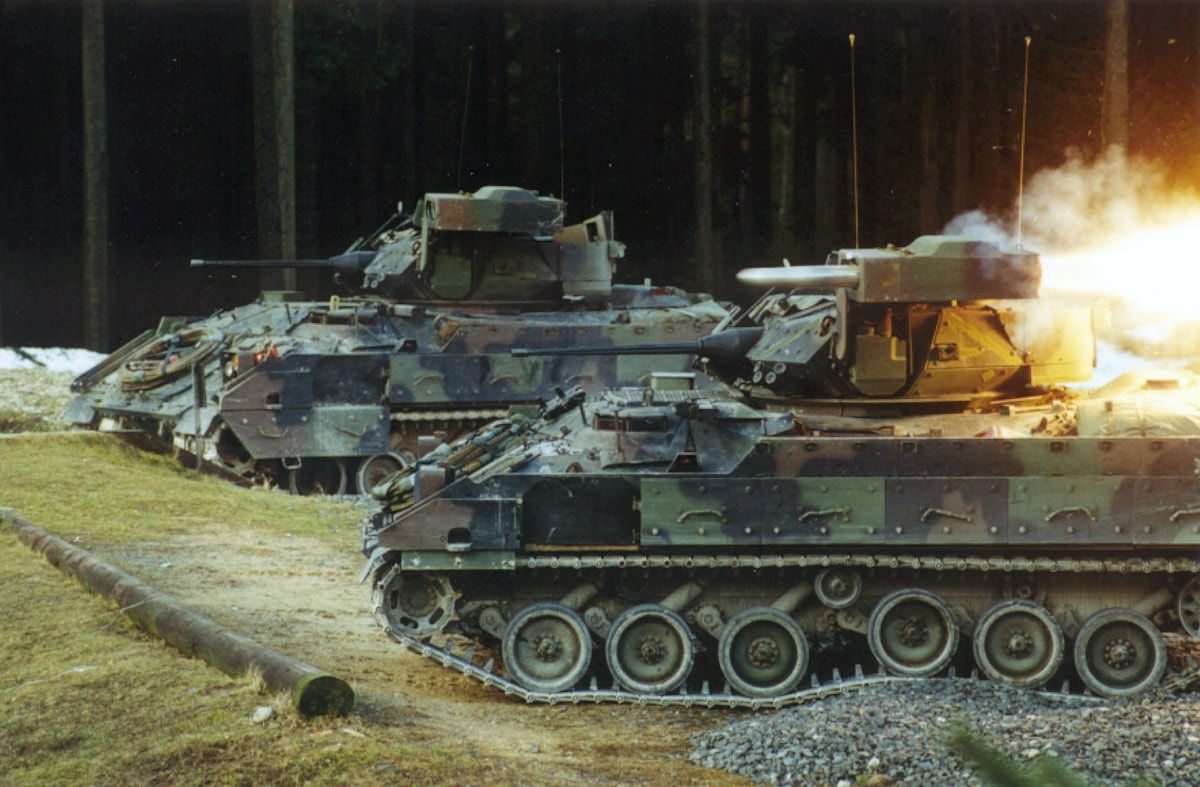The erstwhile M2/M3 Bradley Infantry Fighting Vehicle, a mainstay since the Cold War, will be replaced in the coming years. But don’t look for it to exit the battlefield anytime soon. Initial concepts for the replacement vehicle aren’t due for another year. Then FY2023 and FY 2024 will see the design phase for the new fighting vehicle. The prototype won’t be available until FY2025, so the Bradley has some life left.
Originally Developed to Fight the Soviet Hordes
The M2/M3 Bradley is still considered something of a relic. After a long development cycle, the Pentagon finally announced in 1980 that the Bradley would enter service. The Army needed a vehicle to replace the Vietnam-era M113 armored personnel carrier. The branch was afraid the Soviet Army would use chemical weapons on the battlefield in Europe, and the troops needed a vehicle they could survive in where they could continue to fight. It also needed to be fast and agile enough to keep up with the M1 Abrams Main Battle Tank.
The M2 nomenclature is the vehicle for the infantry and the M3 is for the cavalry. The M2A2 has a crew of three and can hold six infantry warriors, while the M3 performs reconnaissance and also has a crew of three with room for two cavalry scouts. The personnel can shoot out of ports on the side of the vehicle, then the crew takes care of the main armaments. The primary weapon is a 25mm Bushmaster chain gun, plus a TOW anti-tank missile launcher, and a 7.62mm M240C machine gun. It can go 41 mph with a range of 300 miles.
City Fighting Required Improvements
Like the Abrams Main Battle Tank, the Bradley has been upgraded numerous times over the years. The first concern was the target acquisition system for the TOW missile launcher. So, the commanders got an independent thermal viewer. The gunner received improved optics too with a laser range-finder. Now each crew member gets a digital information display.
After fighting primarily in the streets of Baghdad and other cities during the second Gulf War, the Army knew it needed updates for more effective missions in urban terrain. The Army answered with a Bradley Urban Survivability Kit. Personnel got a high-powered spotlight to assist with night fighting. The commander received a new machine gun and the vehicle got better armor with improved seats to protect against RPGs, mines, and IEDs.
The Bradley Is Going Away, But It’s Going to Take Years for Its Replacement
Now the Army is going to replace the Bradley. Five companies are competing for the bid: Oshkosh Defense, BAE Systems, General Dynamics Land Systems and American Rheinmetall Vehicles. This process will take at least three years just to develop the prototype. The new program is called the optionally manned fighting vehicle and several attempts at replacement of the Bradley have already been made since 2003. The previous failed Bradley replacement programs have cost billions, if you count the doomed future combat system. The new request for proposals is purposely vague with few required specifications. The Army wants the companies to be completely innovative and invent the new vehicle from scratch.
The Bradley has been an exceptional platform over the years when it comes to value-added and longevity. The Army has been promising a replacement since 2003, but the Bradley continues to stick around. It will still need to coordinate with the Abrams tank to be effective. With all the armor upgrades, the Bradley is a lot heavier than when its engines were first designed and it has been criticized for being underpowered. The Army now needs to quit wasting money on all the replacement programs and finally get one that will work.
1945’s new Defense and National Security Editor, Brent M. Eastwood, PhD, is the author of Humans, Machines, and Data: Future Trends in Warfare. He is an Emerging Threats expert and former U.S. Army Infantry officer.

